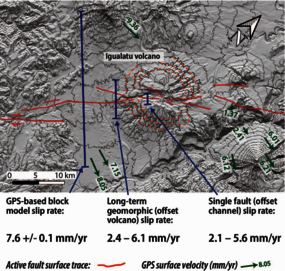Determining active fault kinematics in paleoseismic studies and the implications of temporal and spatial slip-rate variability for seismic hazard assessment
I will present methodologies for determining fault kinematics and earthquake histories in paleoseismic studies on southern Vancouver Island, Canada, and a case study of the Pallatanga-Puna fault in Ecuador that examines the implications of variability of these data for probabilistic seismic hazard assessments (PSHA). Paleoseismic investigations on southern Vancouver Island have proved challenging because low strain rates combined with limited sedimentary cover result in subdued tectonic signals in the geomorphology. In addition, these signals are also obscured by dense vegetation and high erosion rates. We therefore used airborne lidar-derived digital terrain models to highlight previously unidentified active faults in northern Cascadia and adapted new approaches into our paleoseismic studies to determine fault kinematics. On the Leech River fault, we employed a novel method of analysing glacial-till clast orientations to locate strike-slip shear zones, and use fault geometry to infer slip sense. Additionally, along the XEOLXELEK-Elk Lake fault, we utilised forward modelling of trishear deformation to discern fault slip buried beneath a fault-propagation fold. These techniques along with radiocarbon dates discerned a paleoseismic record of these faults for use in PSHA analyses on southern Vancouver Island. However, there is large variability and uncertainty associated with these data, especially for slip-rates that are vital for the fault-source modelsused in PSHA. Thus, on the Pallatanga-Puna fault zone in Ecuador we have tested how different slip rates for the same structure, measured using various methodologies, affect fault-source models. We compare the instrumental/historic earthquake catalogue with seismicity computed in fault-source models that use either paleoseismic, long-term geomorphic, or geodetic slip-rates as inputs. Our results show that geodetic and long-term geomorphic rates produce earthquake rates that compare best with the observed fault system seismicity. However, even if paleoseismic studies may not provide slip rates that represent the entire seismogenic potential of the fault system, their addition to the earthquake record of a fault zone still provides crucial information for PSHA.
Lien vers le séminaire : https://bbb.unistra.fr/b/ren-7p1-3om-ihd

